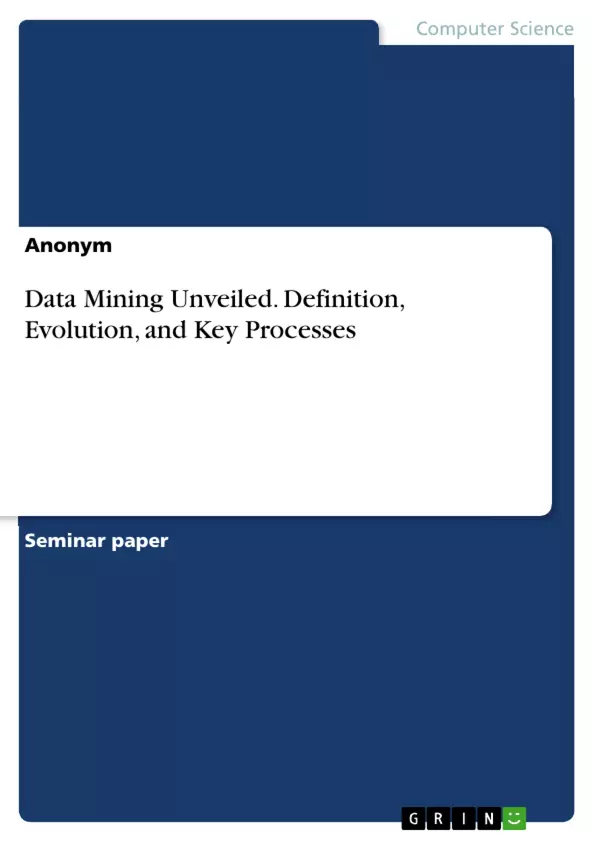The objective of this work is to provide a comprehensive understanding of data mining: defining its concept, tracing its evolution, elucidating its methods and tasks, and describing its typical process
Table of Contents
- Introduction
- Problem definition
- Aim of the work
- Methods and tasks
- Clustering
- Association
- Decision trees
- Data mining process
- Conclusion
- Bibliography
Objectives and Key Themes
This work aims to define the term data mining, describe its origins and development, clarify its methods and tasks, and outline its typical process. It explores the potential of data mining for companies, highlighting its role in extracting knowledge from data to drive business growth.
- The growing significance of data mining in today's customer-driven economy
- Data mining methods and their applications in business, particularly marketing
- Clustering as a method for customer segmentation and grouping
- Association rules and their use in uncovering dependencies in customer behavior
- Decision trees as a tool for predicting customer behavior
Chapter Summaries
- Introduction: The chapter introduces the concept of data mining, highlighting its growing importance in extracting valuable insights from data. It discusses the origins of data mining and its development, particularly in the context of business administration and marketing.
- Methods and tasks: This chapter explores three key data mining methods: clustering, association, and decision trees. It provides detailed explanations of each method, illustrating their application with real-world examples.
- Clustering: Clustering, also known as customer segmentation, focuses on dividing unclassified data into groups based on similarity. The chapter explains the concept and provides an example of customer grouping based on demographic data and buying behavior.
- Association: This section introduces association rules, which identify dependencies in customer behavior. The chapter uses an example of fruit and vegetable sales to demonstrate how these rules work, defining concepts like support and confidence to measure the uncertainty of a rule.
- Decision trees: The chapter delves into decision trees, which are used to predict customer behavior. It explains the components of a decision tree, including nodes and their attributes.
Keywords
This work focuses on the application of data mining methods for extracting valuable insights from data to support business growth. Key concepts explored include clustering, association rules, decision trees, customer segmentation, and customer behavior analysis. The work highlights the importance of data mining in today's data-driven economy and its practical applications in various business domains.
- Citar trabajo
- Anonym (Autor), 2014, Data Mining Unveiled. Definition, Evolution, and Key Processes, Múnich, GRIN Verlag, https://www.grin.com/document/1361647



